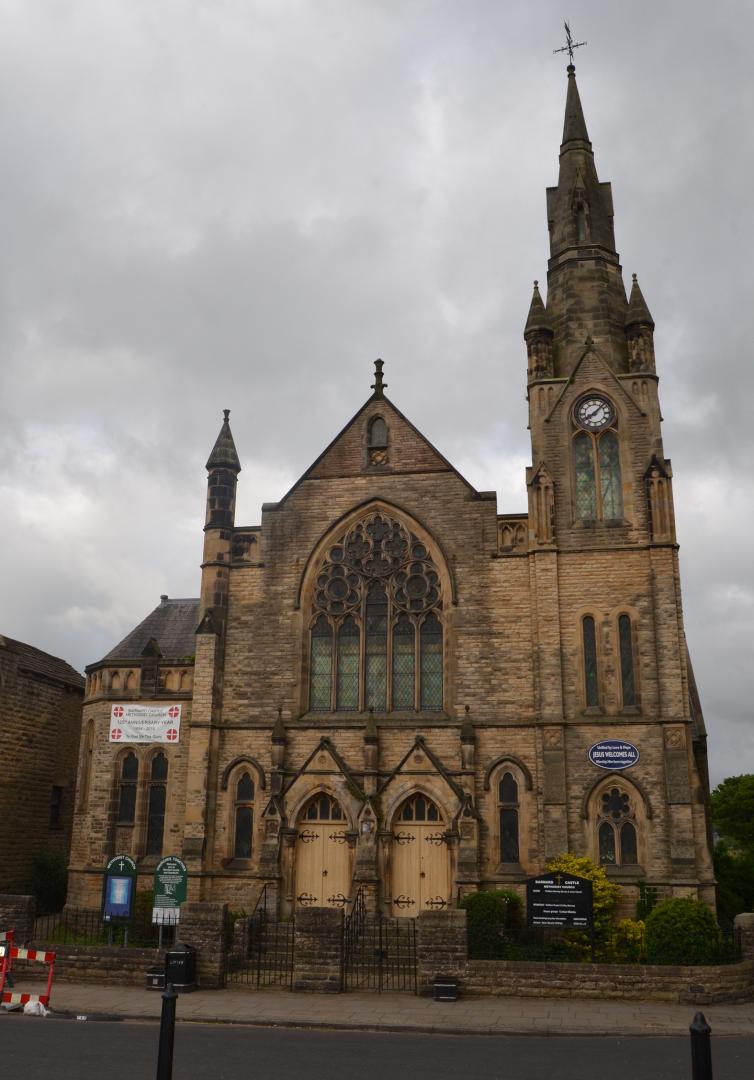AS celebrations to mark the 125th anniversary of Barnard Castle’s Holy Trinity Methodist Church are being put in place, we take a look through the Teesdale Mercury’s archives to discover the story behind the building.
The Methodists have had a long history in Teesdale and specifically Barnard Castle.
In the 17th and 18th century, law stated that everyone must belong to the Church of England, but those who followed their own faith met in secret.
The first recorded worship meetings of Wesleyan Methodists in Barnard Castle are said to have taken place in the home of Grace Dunn, who lived in Galgate, in 1747. Such was the religious persecution at the time that windows were often broken.
Afraid of announcing meetings, she notified people by hanging her handkerchief out of the window.
Five years later, John Wesley, the founder of Methodism, visited Barnard Castle for the first time. He set up stall outside the home of Joseph Gargett, which was later flattened to make way for the building of The Witham, on May 25 and preached to the large and rowdy crowd.
Fearing many would not be able to hear him, he sent for the “fire wagon” and had the masses “dowsed in water” to quieten them down.
The first official Methodist meeting house in Barnard Castle was situated in an obscure part of town, adjoining the “Crook land” at the head of a narrow lane known as Hole-in-the-Wall.
By 1764 the society had increased its numbers significantly and purchased a plot of land adjoining the Demesnes from John Robinson. The Broadgates Chapel was opened the following year. This chapel was significantly expanded with the construction of a west wing. By 1810 a Sunday School was opened.
However, such was the popularity of Methodism that the friends soon “desired a larger and more commodious building” .
William Atkinson, editor of the Teesdale Mercury in 1892, was particularly vocal about the plans by the Methodists to construct a new church at the bottom of Galgate in devoting many column inches to the subject in many of his editorials.
In one edition, he said: “It is quite safe to say that no better site for a religious house could have been secured in this town and the promoters are heartily to be congratulated on their extreme good fortune.
“The new church will be a handsome Gothic structure in the decorated style of architecture having a tower and spire at one angle and rich tracery windows. The building is planned with nave and transept and an arched recess for the organ and choir.
“A spacious entrance vestibule is provided which will have a tiled or mosaic floor. The seats will be open with moulded and shaped stall ends and all of pitch pine. The roof is also open and of pitch pine, wagon headed and covered, no pillars being used to support it. The windows will be filled with ornamental leaded lights. A gallery is provided at one end and the total accommodation of the church will provide for 620 persons.”
He even went as far as mentioning the “lavatory accommodation” that would be provided for the minister.
Mr Atkinson was also quick to congratulate the fourth Duke of Cleveland, Harry Powlett (1803-1891), for “handing over the site” on which the church was constructed. The church was designed by architects Morley and Woodhouse, of Bradford and Bolton, who had built many chapels throughout the country. The task of building the church was given to Barnard Castle’s own Joseph Kyle.
The total cost was estimated at £3,500 (£447,000 in today’s money), of which £2,450 was raised through subscription. It was reported that all the joinery work on the church was to be carried out by Mr Robinson of Lartington. The plumbing and glazing was to be done by Mr C Raine of Barnard Castle.
The foundation stone was laid with great ceremony on Friday, January 20, 1893, by Lord Barnard despite high winds. Bunting was “freely displayed” and after doing his duty, Lord Barnard was presented with an inscribed silver trowel by Gibson Kyle on behalf of the contractors.
The mallet used to lay the foundation stone was historic – it also been used to lay the chief stones of The Bowes Museum and the county school.
The New Wesleyan Church, now known as the Holy Trinity Methodist Church, was opened on March 30, 1894, when the Revd HJ Pope, the president of the Wesleyan Conference, the Revd CJ Kelly, ex-president, and the Revd W Scarborough, chairman of the district, gave sermons.
And 125 years on, the church has stood the test of time. Mr Atkinson’s words in 1894 still ring true: “The structure must take rank among the best buildings in Teesdale and the Wesleyan Methodist body are to be heartily congratulated upon the loving enterprise which has prompted them to erect a place of worship at once handsome, central, convenient and beautiful.”







